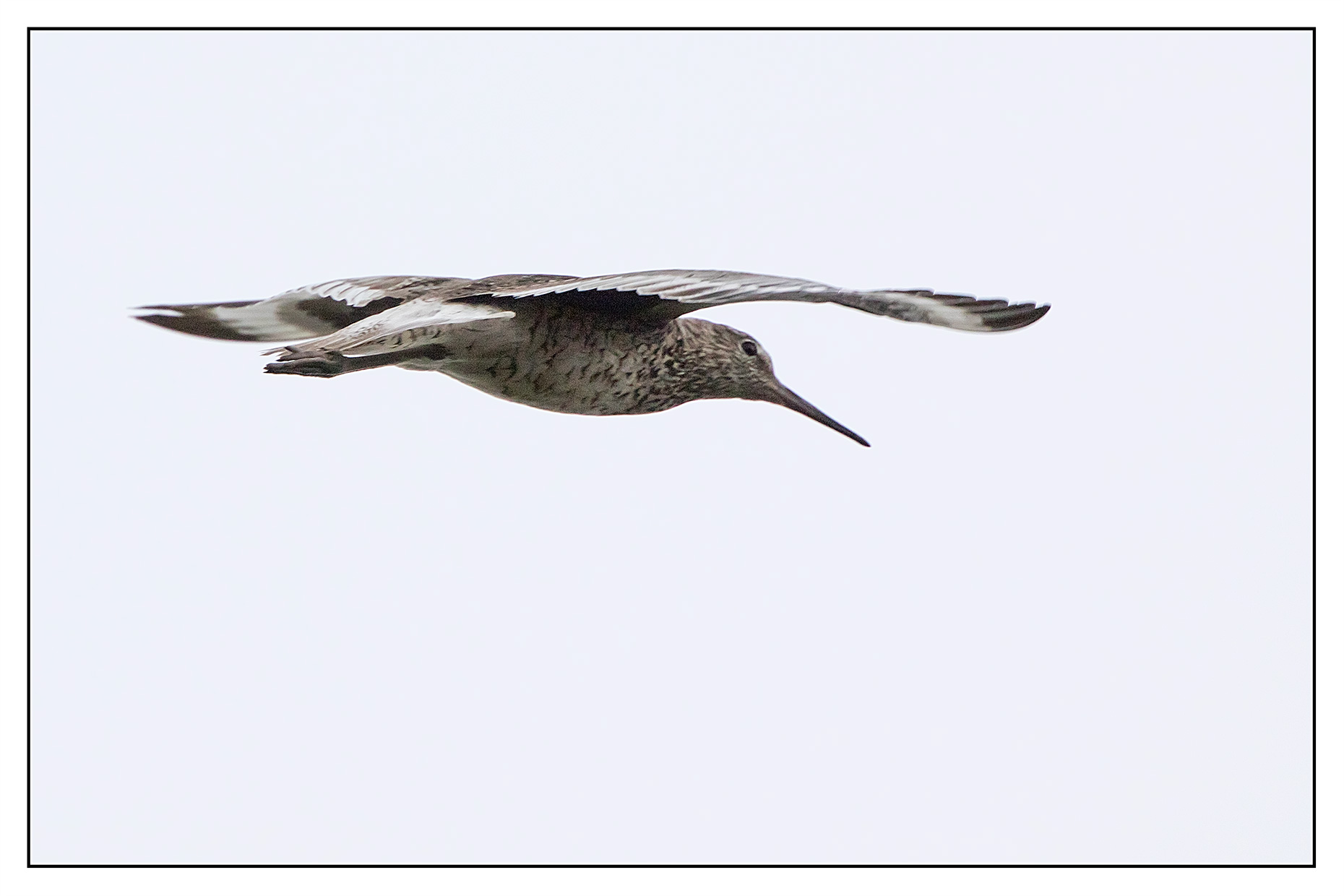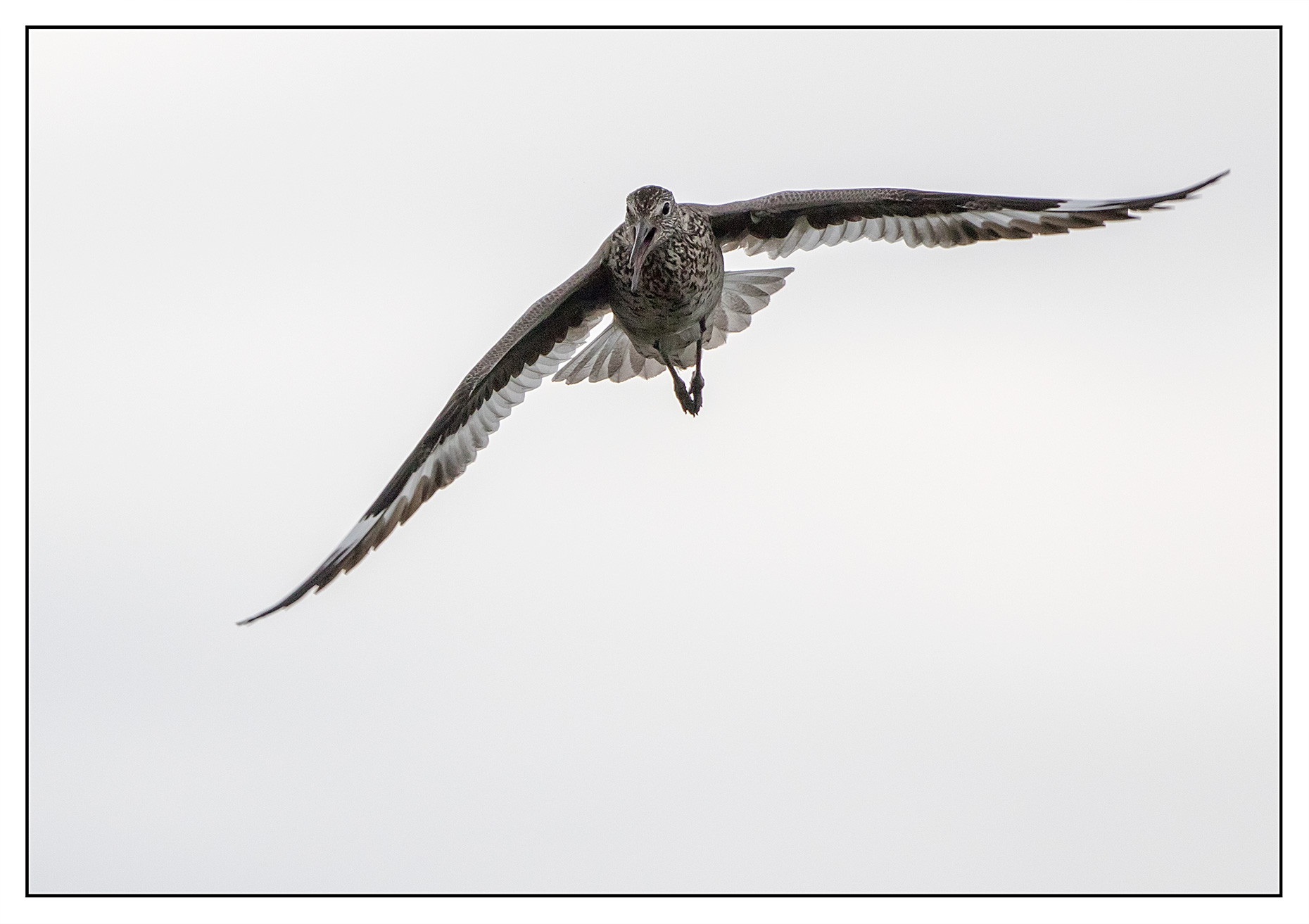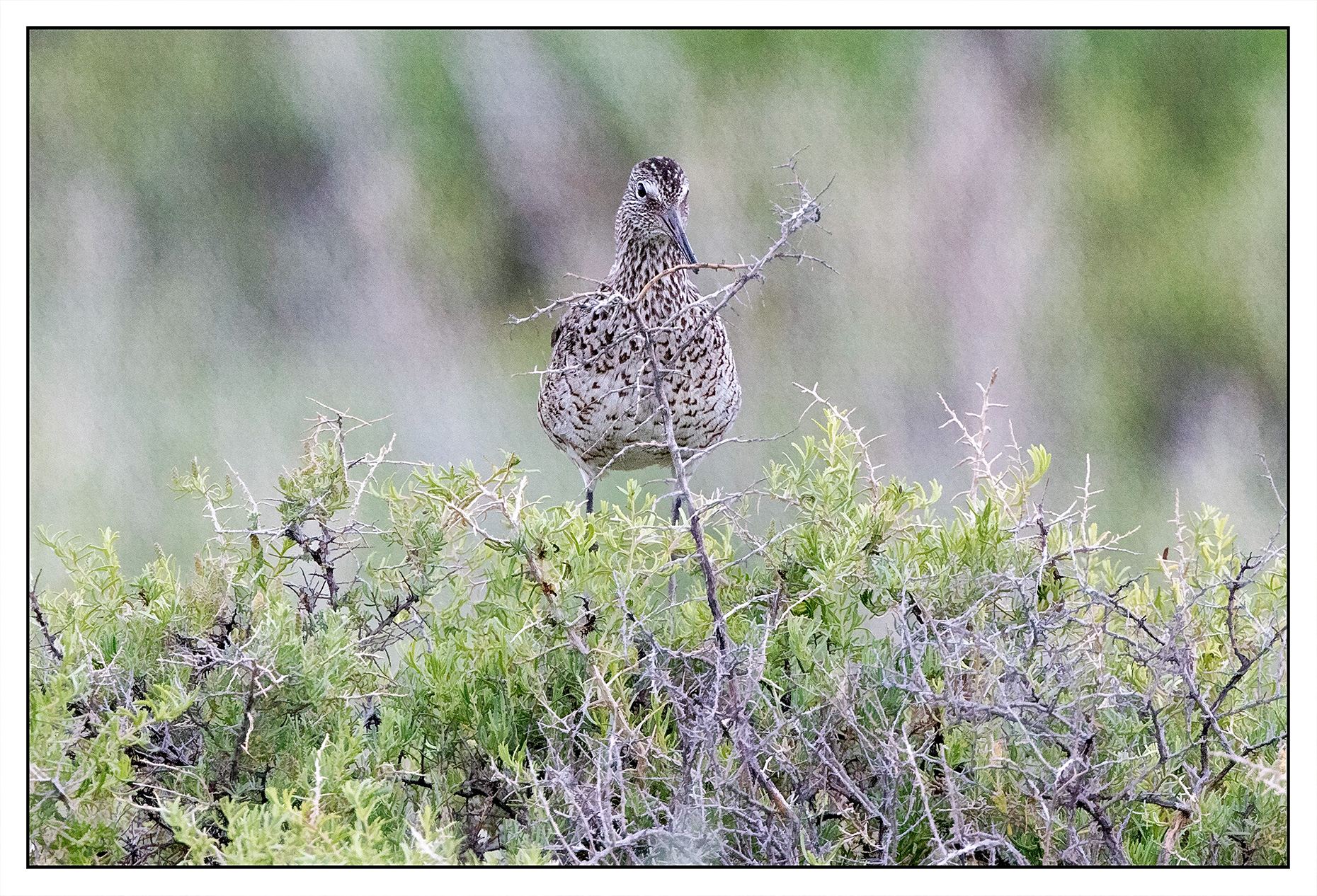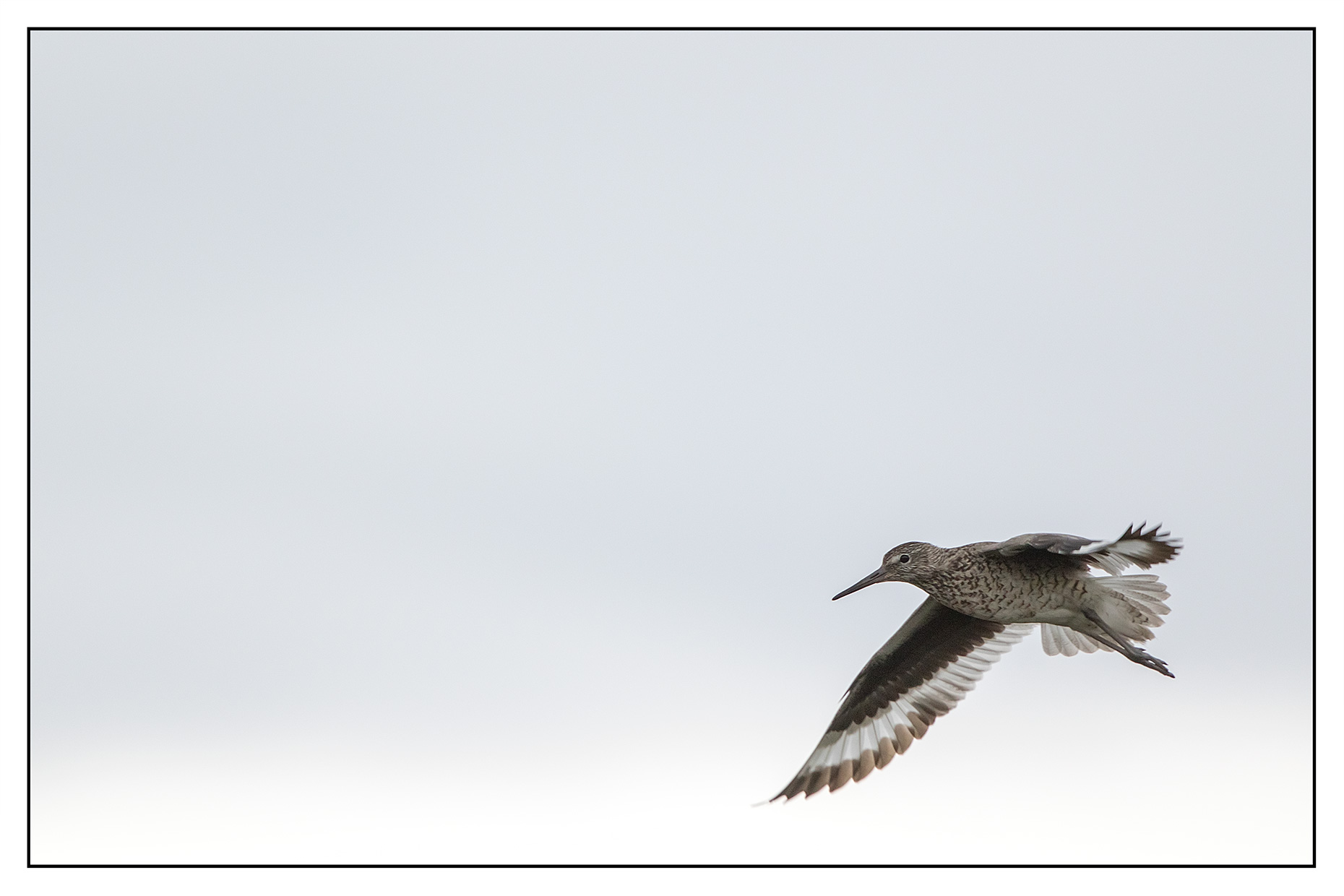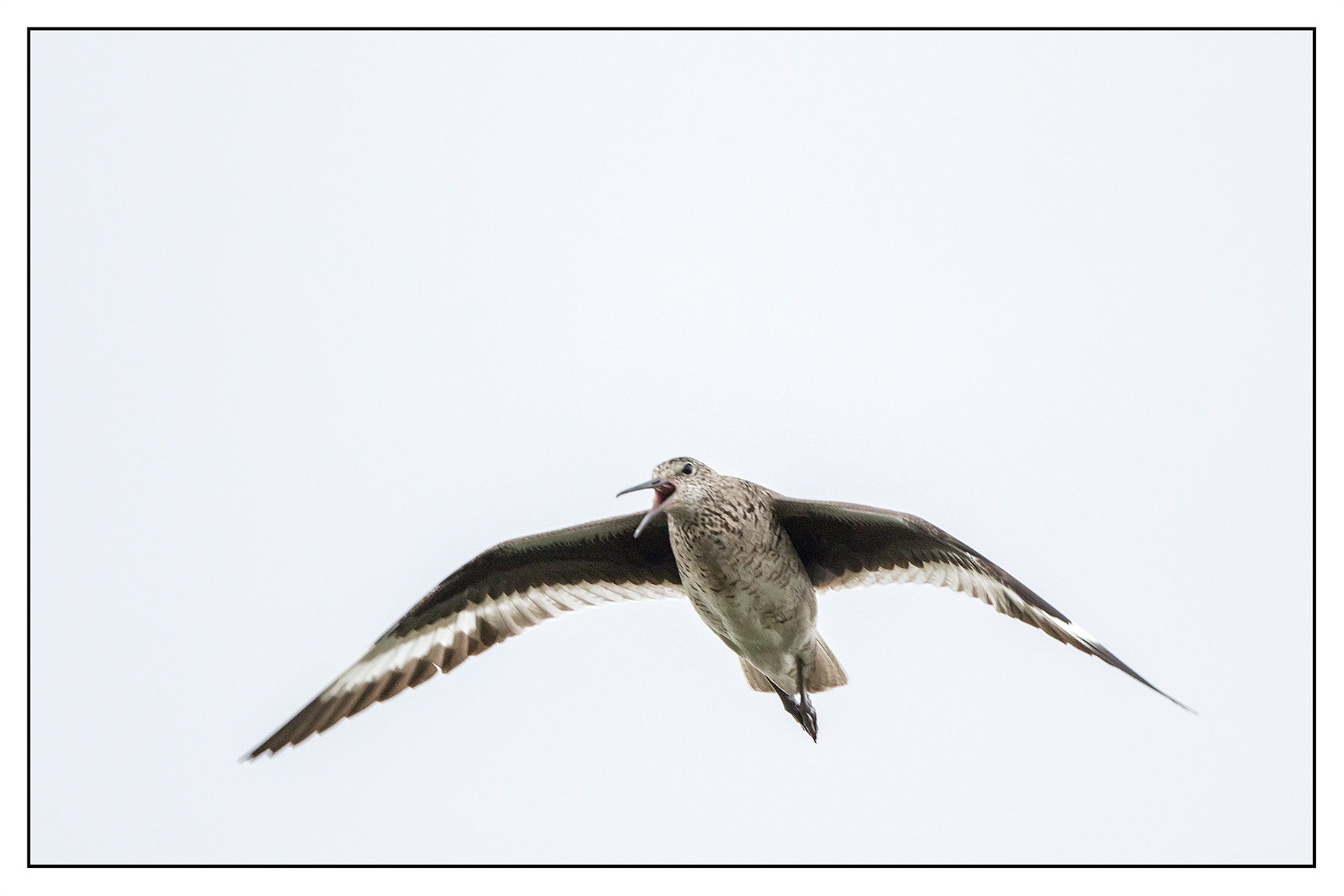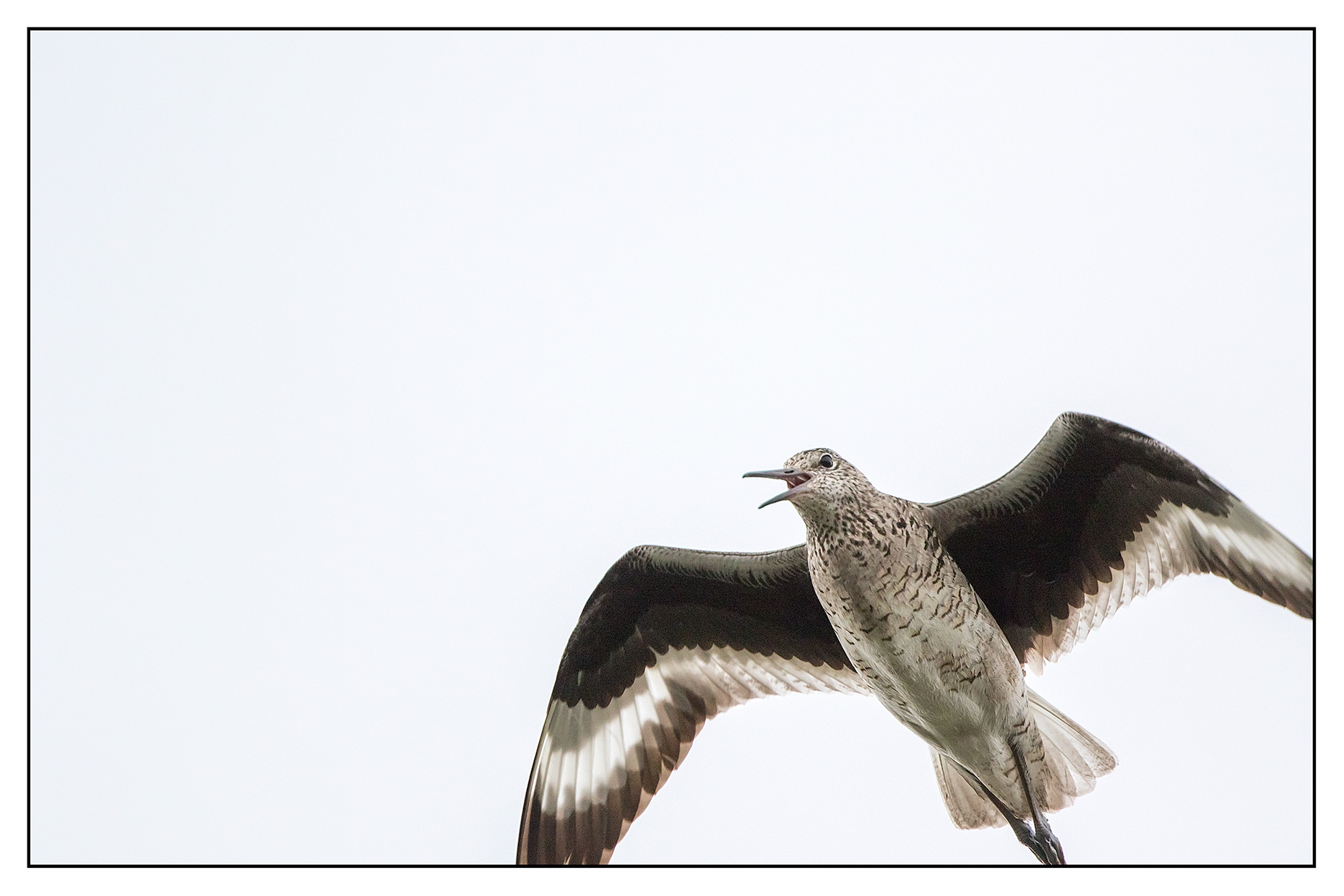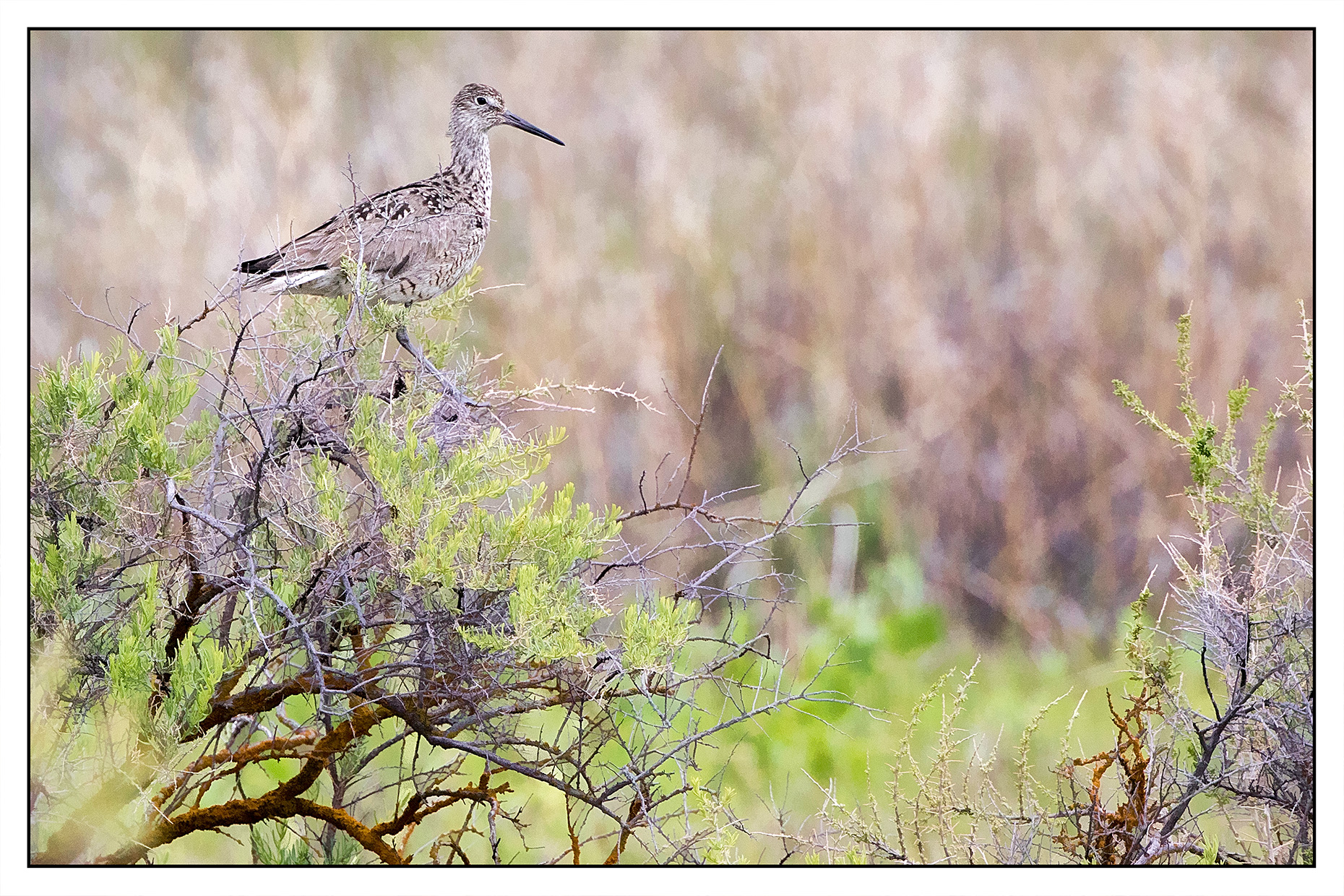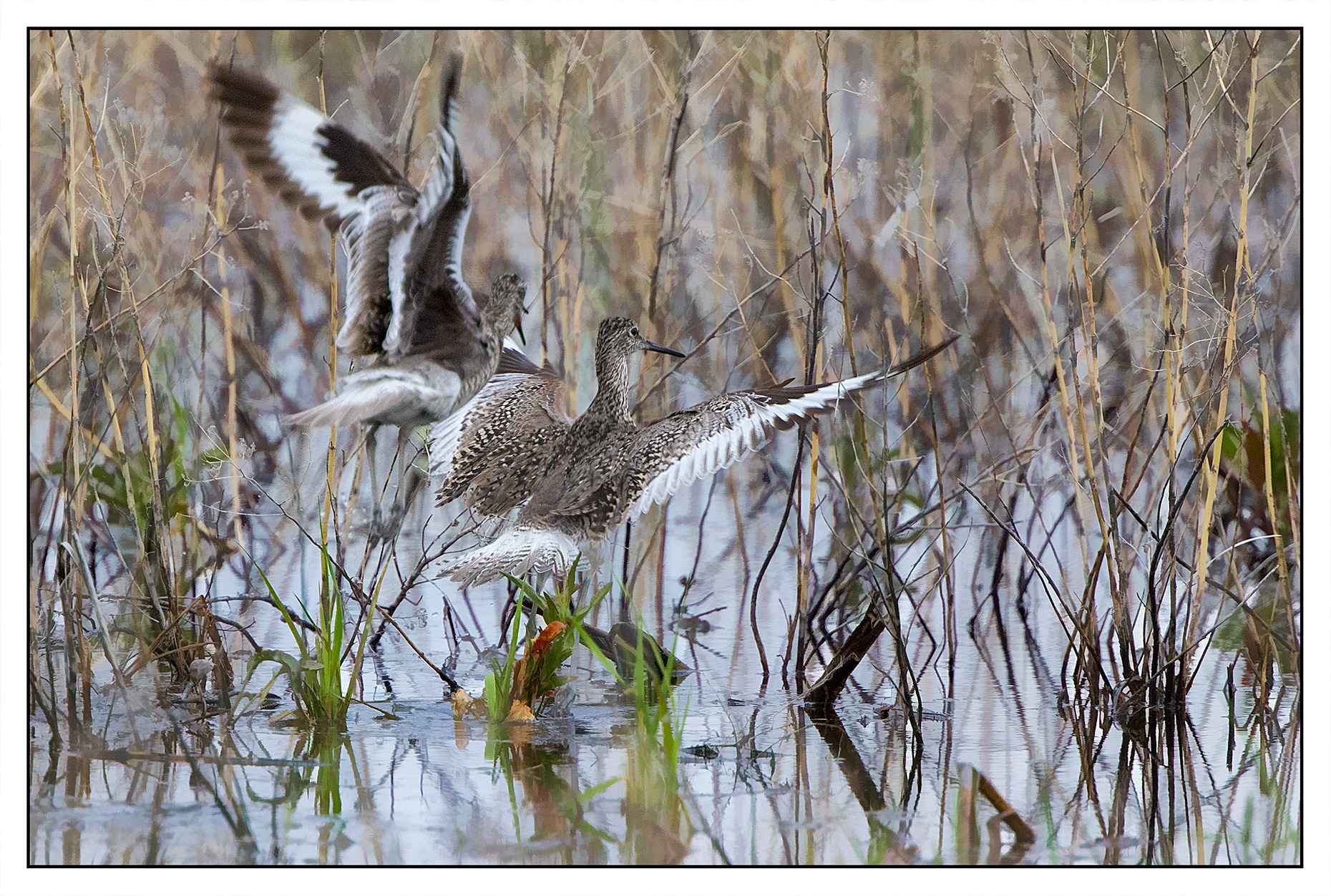With water levels high at Malheur, I wondered if there would be as many birds on Ruh Red Lane as there had been in years before the recent drought. I’ve gotten some of my best pictures of Avocets and Black-necked Stilts there. It certainly didn’t look very promising as we headed out the road; all we saw for quite a while was this Western Kingbird perched on the barbed wire fence.

With prospects looking a little dim, I was relieved when we actually ran into some water along side the road. There weren’t too many birds in sight, but there was a Black-necked Stilt,

one of the two birds I’d gone looking for.
A little ways down the road Leslie got this shot of as Snowy Egret foraging next to a White-Faced Ibis.

On our way back I managed to get a shot of this male Curlew (or is it a Whimbrel?) that Leslie sighted.

While at the refuge headquarters I read that someone had spotted Golden eaglet, so I decided to check out the nest that I had seen several years before without ever spotting any Golden Eagles. Sure enough, we spotted two eaglet stretching their wings and peering over the nest, a first-ever for me.

I knew that we were too late to see large numbers of migrating birds, but I’m never disappointed by the wide variety of birds I see at Malheur.

